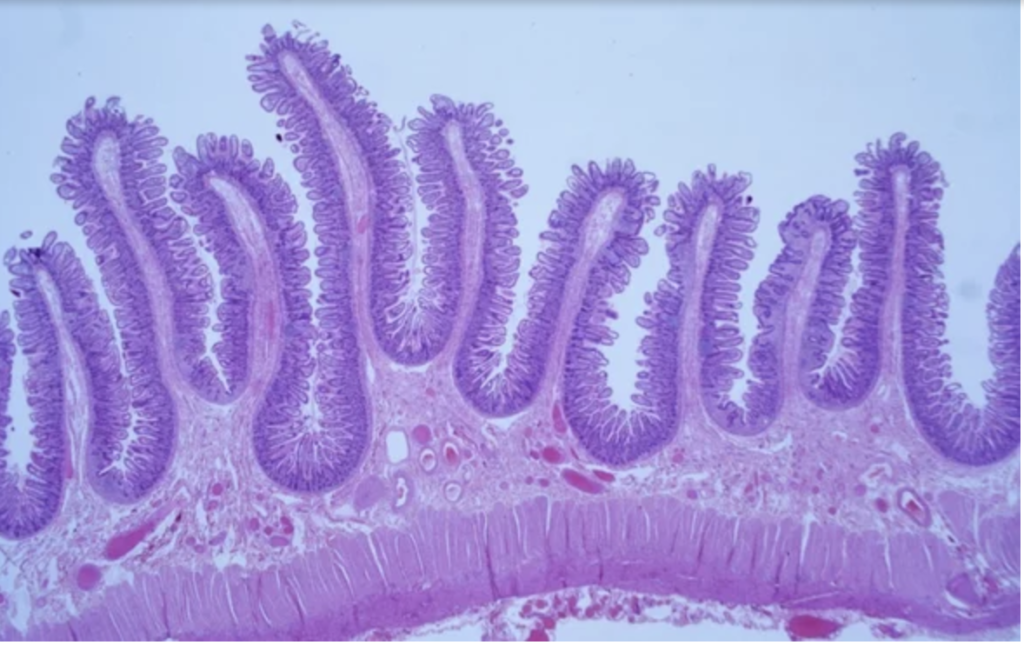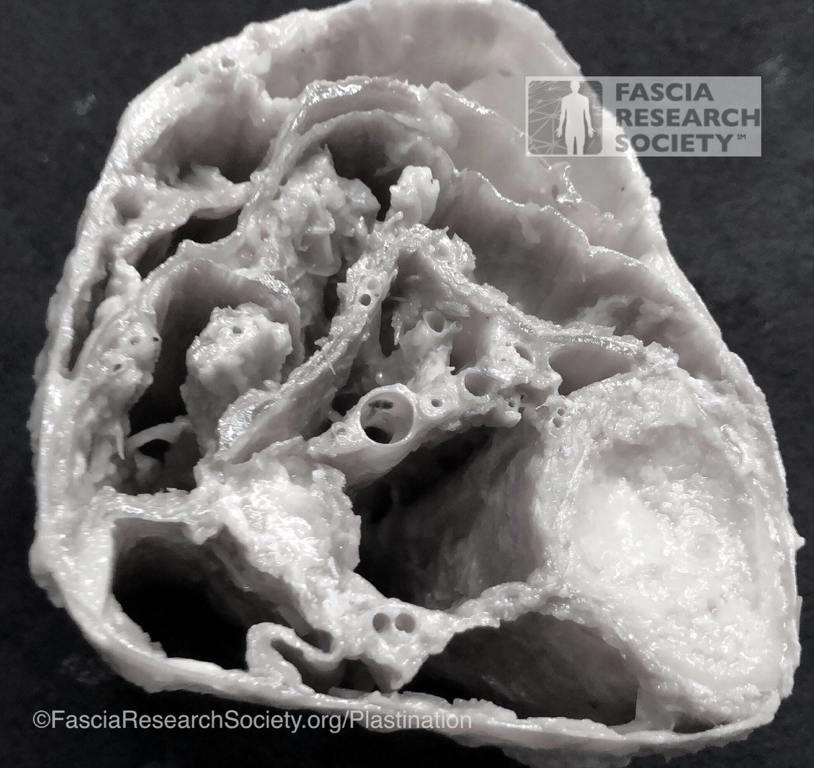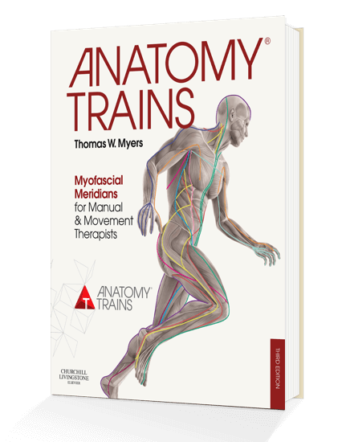Insterstitium: Observations by Tom Myers, author of Anatomy Trains and lecturer on fascia
Every act of observation reveals one thing at the cost of obscuring something else. New methods of observation inside the body – in this case confocal laser microscopy – are showing a system conventional slide and staining methods collapsed – and thus it was never ’seen’.
Read about the ‘new’ discovery in Scientific American here: https://www.scientificamerican.com/article/meet-your-interstitium-a-newfound-organ/

This system – recently dubbed the ‘interstitium’, and part of that ‘fascial system’ therapists have been exploring therapeutically for years – is a body-wide communicating system for the push and pull of mechanical information. A system of collagen and elastin fibres suspended in a mucousy gel that binds with interstitial (inter-cellular) fluid, this system is closely aligned with the lymphatic system and the white blood cells of the immune system – and has been explored as part of how cancer might be spread or contained.
In mechanical terms, this bubbly gel acts in a variety of ways;
- its viscosity dissipates sudden forces to minimise damage to tissues
- its elasticity allows deformation that will return to normal when temporary forces subside
- its plasticity allows it to remodel (to be remodelled by the attached cells) in response to sustained forces (such as gravitational forces in posture, or scarring from a wound).
This tissue system was originally filmed in vivo and described in a number of papers and books by French surgeon Dr Jean-Claude Guimberteau, described on YouTube by Gil Hedley as peri-fascial membranes, and written about by me in Anatomy Trains.
This system can be dubbed a new organ system if you wish, but it is part of a continuous Biomechanical Auto-Regulatory System (which I’ve been talking about for a while) – we could call it that – that runs in a continuous mechanical linkage from the DNA through the nuclear membrane via the microtubules to the cellular membrane, out through the transmemiranous proteins to the glycocalyx (the first mucousy layer outside the cell) to this interstitium and on up to the more gross and dissectible fascial structures.
The real excitement here is the mechanical continuity from cell to organism. That these scientists have imaged something they missed for years is great, but the larger insight is that our ‘biomechanics’ – muscles work via tendons over joints restrained by ligaments – requires total re-think in terms of these new findings of mechanical continuity from molecular on up through cells, tissues, and the entire human being.

Oh, the thrill of discovery – but we’ve been working in this for years.
This new picture (above) from the Fascial Plastination project near Berlin shows some of the larger parts of this new ‘organ’ of interstitium. See the vessels in the fascial layers? The layers have been known for a long time, but they were thought to be ‘solid’ fascial layers. With new imaging methods, we can see how the fluids runs between the two layers of denser tissue that form the outside borders, but we have not visualised the fluid exchange system in the middle that soaks up nearly a third of our body’s fluid.
Yay for scientists for ‘discovering’ this, and for linking it to cancer metastasis and showing it’s importance in maintaining membranes. ‘Yay for us’ for having understood the importance of this system (albeit its mechanical, not so much physiological) importance for the last 25 years.
Every layer you can see in this pic is actually bilaminar, with fluid-flowing interstitium, or what i call ‘fascia’, or what Gil calls perifascial membranes or what Guimberteau calls microvacuolar system. We’re all climbing the same mountain – understanding how the body works.
This system has not been seen before because it does not lend itself to partition, to the whole idea of ‘parts’ in general. It is the context for physiology, in this case, and the context for all movement in our field. As a context, it is an ‘environment’, and like most environments, is undetected until someone points it out.
We are woven together with the collagen sinews, and glued together with the mucousy glycoaminoglycans. That this system works as well as it does to keep 70,000,000,000,000 cells happy and functioning with circulation of gasses, food, and taking away waste is an amazing miracle, to which the atheist can only say: “Everyone whose system didn’t work this well died.”
Recommended
Anatomy Trains – Third Edition
$76.95The brand new Anatomy Trains book (3rd ed., 317 pp) maps the longitudinal myofascial connections – how the muscles are functionally linked in ‘myofascial meridians’ through the fascial webbing. Anatomy Trains opens a unique window to the anatomy of connection via this book – fully illustrated in 4-color with new anatomy art, fascial dissections, and… Read more
Read more





